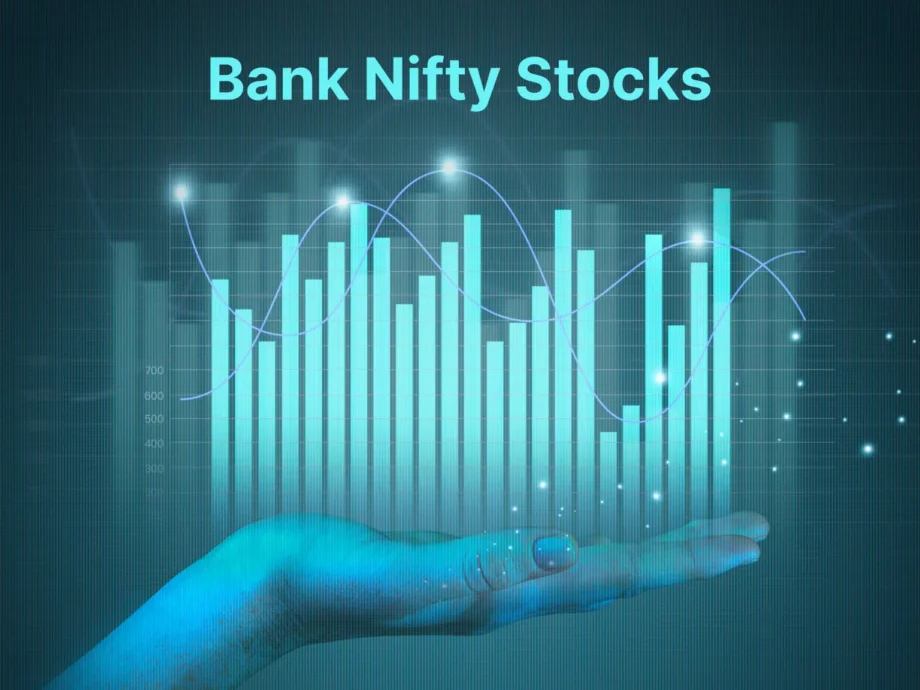Introduction: Understanding Bank Nifty and the Big Banks of India
The Indian stock market is dynamic and complex. The Nifty 50 index, launched in 1996, is a crucial benchmark tracking the 50 largest and most liquid companies on the National Stock Exchange (NSE) of India. It’s a market capitalization-weighted index, meaning companies with larger market values have more influence.
Understanding the Banking Sector: The Bank Nifty
A key part of the Nifty 50 is the Bank Nifty, established in 2003. This sub-index tracks the 12 most liquid and highly capitalized banking stocks in India. These major banks play a critical role in the nation’s financial system and significantly impact the Nifty 50.
Key Points
- Nifty 50: Tracks the top 50 companies on the NSE.
- Bank Nifty: Focuses on 12 major Indian banks, highlighting the banking sector’s impact on the market.
Understanding the Nifty 50 and the Bank Nifty helps investors make informed decisions about the Indian stock market.
Importance of Bank Nifty: A Window into India’s Banking Landscape
The banking sector is essential for any nation’s economy, facilitating credit flow, promoting investments, and driving growth. A healthy banking sector ensures financial stability and fuels economic activity.
Role of Bank Nifty
The Bank Nifty is a key indicator of the Indian banking industry’s health, tracking the performance of the 12 leading banks.
- Positive Indicators: A strong Bank Nifty signals a robust banking system with efficient credit flow.
- Negative Indicators: A weak Bank Nifty indicates issues like rising non-performing assets (NPAs) or slowed credit growth, potentially hindering economic expansion.
Broader Impact
The Bank Nifty’s performance affects other industries and overall market sentiment. A strong Bank Nifty boosts investor confidence across sectors, while a weak one raises concerns about credit availability, leading to cautious investments.

Top Constituents of Bank Nifty
The Bank Nifty includes the 12 most liquid and valuable banking stocks in India. These institutions play a crucial role in shaping the Indian financial landscape. Here’s an overview of the top constituents of Bank Nifty, highlighting the weightage leaders as of June 27, 2024:
Public Sector Banks (PSBs):
State Bank of India (SBIN):
SBI is India’s largest public sector bank, with an extensive branch network and a significant customer base. It offers a wide range of banking products and services to both retail and corporate clients.
Punjab National Bank (PNB):
PNB is another prominent public sector bank known for its diverse banking solutions and its role in financing various sectors of the Indian economy.
Bank of Baroda (BANKBARODA):
Bank of Baroda is a leading public sector bank with a strong national presence, serving a diverse clientele with comprehensive financial products.
Private Sector Banks:
HDFC Bank (HDFCBANK):
HDFC Bank holds the highest weightage in Bank Nifty. It is India’s largest private sector bank, renowned for its strong brand reputation and focus on digital banking services.
ICICI Bank (ICICIBANK):
ICICI Bank is a leading private sector bank offering a wide range of banking products and services, catering to both retail and corporate customers across India.
Axis Bank (AXISBANK):
Axis Bank is known for its customer-centric approach and digital banking initiatives, offering a comprehensive suite of financial services to its customers.
Kotak Mahindra Bank (KOTAKBANK):
Kotak Mahindra Bank is a prominent private sector bank specializing in investment banking and wealth management, serving a premium clientele.
IndusInd Bank (INDBK):
IndusInd Bank focuses on innovative banking solutions and serves a diverse customer base, particularly the new-age segment of customers.
Other Banks:
AU Small Finance Bank (AUBANK):
AU Small Finance Bank is a leading small finance bank that prioritizes financial inclusion, offering tailored banking products to underbanked populations.
These top constituents of Bank Nifty reflect the diversity and strength of India’s banking sector, influencing market trends and investor sentiment.
Factors Affecting Bank Nifty: Influences on Performance
The Bank Nifty’s performance is shaped by several key factors:
Interest Rates: Changes in RBI’s interest rates impact bank profitability. Higher rates can increase net interest margins (NIMs), while lower rates may squeeze margins.
Economic Growth: A strong economy boosts loan demand, benefiting banks. Economic slowdowns can lead to higher non-performing assets (NPAs), impacting bank profitability and the Bank Nifty.
Non-Performing Assets (NPAs): Rising NPAs indicate higher credit risk, affecting bank profitability and potentially weakening the Bank Nifty.
Government Regulations: Regulatory changes, like lending norms and capital requirements, influence bank profitability and long-term stability.
Global Factors: International events, geopolitical tensions, and global economic trends impact investor sentiment and the Bank Nifty’s performance.
Understanding these factors helps investors anticipate Bank Nifty movements and make informed decisions in the banking sector.
Conclusion: Bank Nifty – Guiding India’s Banking Landscape
The Bank Nifty is a crucial indicator of the Indian banking sector’s health and performance, reflecting the credit environment, investor sentiment, and its impact on the economy.
Benefits for Investors
Analyzing Bank Nifty constituents helps identify investment opportunities. Understanding each bank’s weightage and performance informs decisions on stocks or sector-focused investments.
Important Considerations
This blog provides insights, not financial advice. Before investing, research individual bank stocks, assess risk tolerance, and consult a financial advisor.
Stay Informed
Stay updated on the Bank Nifty and its influences to navigate the banking sector effectively.





